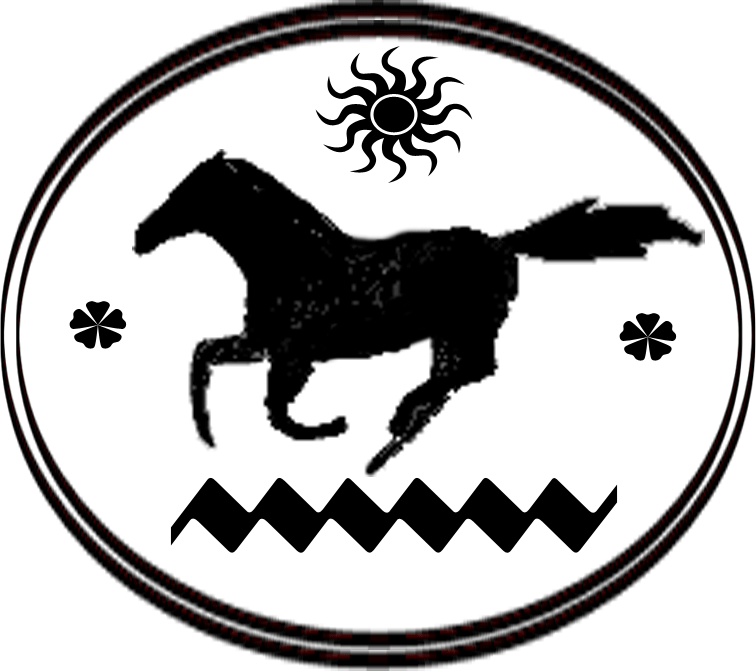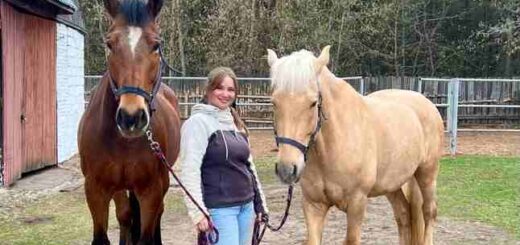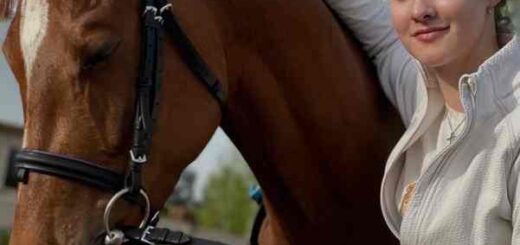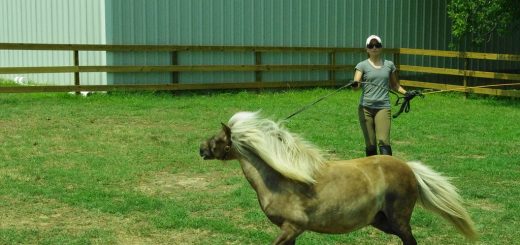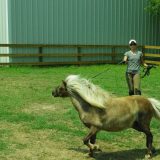How to prepare for horseback riding with dogs
Two of the most well-liked activities worldwide are horseback riding and dog walking. Both are excellent forms of exercise that can keep both people and animals occupied for hours. What occurs when you combine the two, though?
It can be a lot of fun to go horseback riding with dogs, but you should take some safety measures to protect them both. This article will cover the advantages of riding horses with dogs as well as some safety advice.
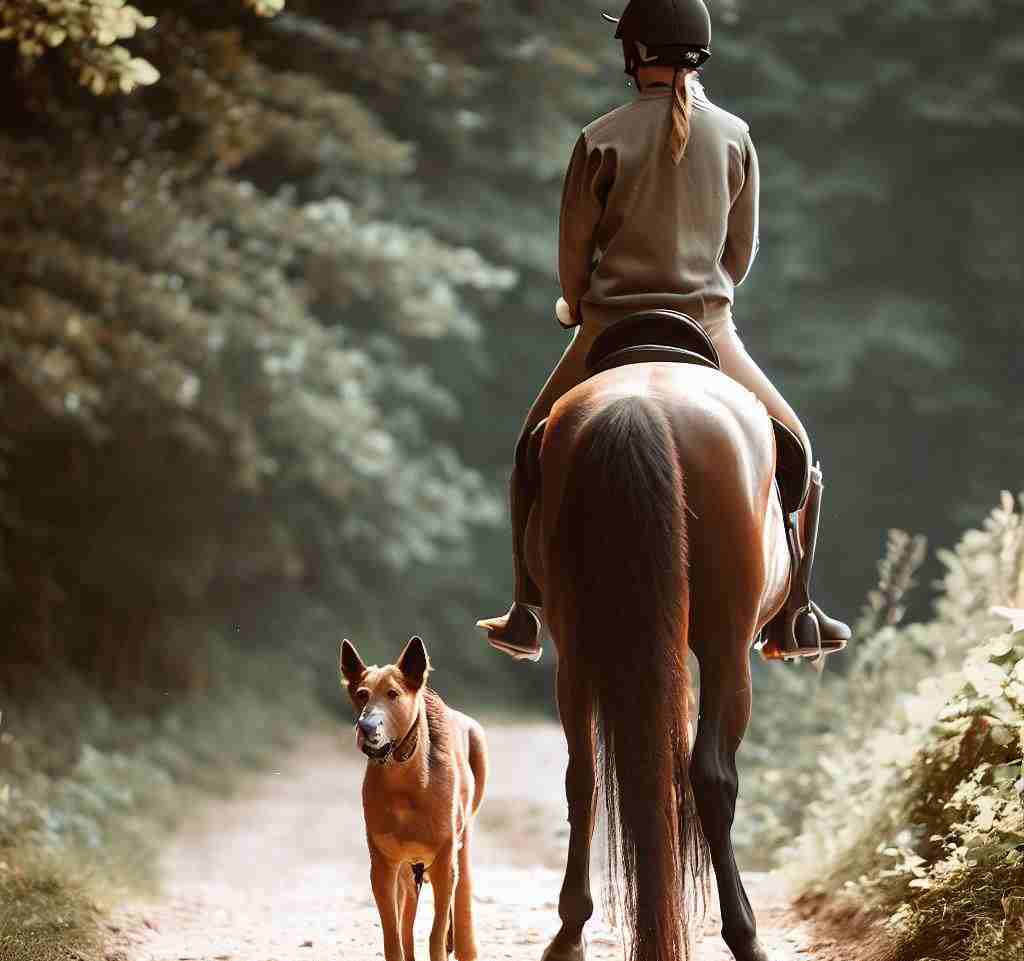
Benefits of Horseback Riding with Dogs
Horseback riding with dogs has a lot of advantages. For starters, it’s a fantastic way for both animals to exercise. Dogs enjoy running and playing, whereas horses require regular exercise. When you combine the two, you get a workout that is advantageous for both animals and enjoyable for you.
Horseback riding with dogs can enhance their social and obedience skills in addition to providing exercise. Horse exposure teaches dogs to respect the larger animal and obey commands. This may also encourage them to behave better in other settings.
Dogs and horseback riding can be a wonderful way to strengthen your relationship. Your relationship may get stronger when you spend time together doing something you both like.
So, how can you ride a horse while keeping your dog safe? Both your dog and your horse must be at ease around one another, be able to follow directions, and be in good physical shape. Additionally, you ought to be able to keep both of them under control in extreme circumstances should such arise.
While these are the general rules for ensuring a pleasant horseback ride with your dog, there are a few additional crucial information that you should be sure you are aware of before beginning your first ride together.
PREPARATIONS
Your dog and horse may get along well when they are just standing or walking close to one another, but before you take them on the trail with you, you should make sure that they have engaged in a variety of activities with one another beforehand.
How can you introduce them to one another in a secure manner? The best strategy is a gradual one, as is the case with most training techniques.

Step 1. Practice the Basic Commands
Whether or not your dog is prepared for the freedom of an open trail ride with you and your horse will depend on whether or not they have a firm understanding of essential verbal commands.
Review the commands you hopefully taught them as a puppy. You only need to teach the words “come,” “sit,” and “stay” as you get your dog ready for their first trail ride. Make sure they react to these cues not just when you are right next to them, but also when you are far away.
Once you have progressed further in the process, you will require to exercise these commands to make sure that your dog keeps a safe distance while you mount your horse and stays out of the way while you are riding on horseback. Take a few weeks or months if nesessary to practice these commands with your dog before moving on to the next stage.
Your horse follows the same rule. Even in the presence of numerous outside distractions, your horse ought to be very responsive to your commands and cues to start and stop. Desensitization training or “bomb proof” training can help your horse become accustomed to unsettling or unexpected situations, which is a great way to achieve this.
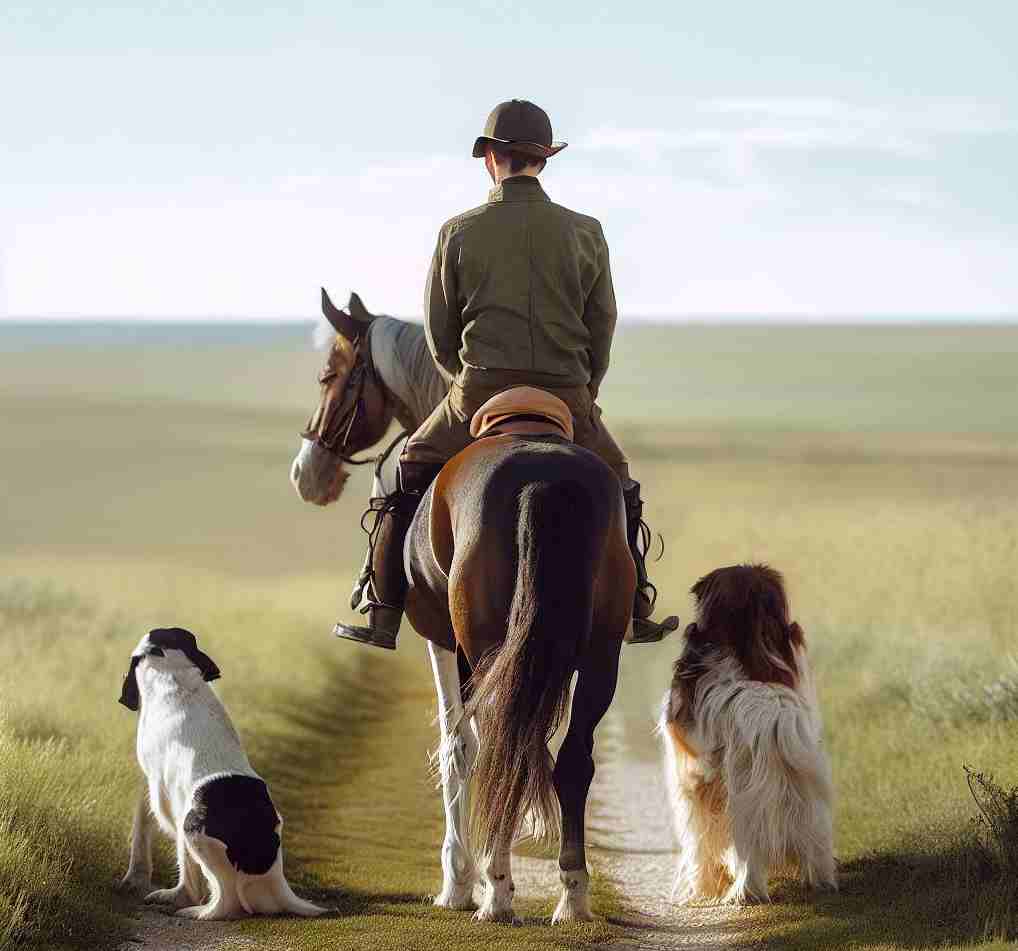
Step 2. Making the Introduction
Bring your dog close to a horse that is securely restrained or in its stall to start. At this point, it’s crucial to praise your dog friend for any calm behavior they exhibit. Move further away from the horse until they calm down if they are overly fearful or excited, and then slowly move closer to the horse while rewarding your dog for being well-behaved.
Use short commands to repeatedly bring your horse’s attention back to you if they are acting tense. Continue doing this until neither of your animals exhibits strange behavior when they are in close proximity to one another.
Step 3. Nurture the Relationship Between Dog and Horse
It might be tempting to try a ride as soon as you feel like you have good control over both of your animals, but this is not advised.
By frequently bringing your dog to your stable with you while you’re doing chores or doing groundwork with your horse, you can maintain the bond between your animals. This is an excellent chance for you to practice your commands with each of your animals while they are around one another and for your animals to grow in trust of one another.
Your horse must become aware of your dog in order to keep an eye out for them. Horses are much larger than your dog, regardless of dog’s size.
An unintentional step or kick could hurt your dog.
To reduce the risk of an accident, some riders equip their dogs with tiny bells while they are near their horses. Even though it’s not absolutely necessary, if you have a small dog you might think about it.
You must exercise caution because there are no hard and fast guidelines for how long it will take for your animals to feel completely at ease around one another. You can proceed to the next step when you believe they are at ease with one another while still obeying your instructions.
By this point, if your horse isn’t responding well to simple commands around your dog, you should keep practicing groundwork with them.
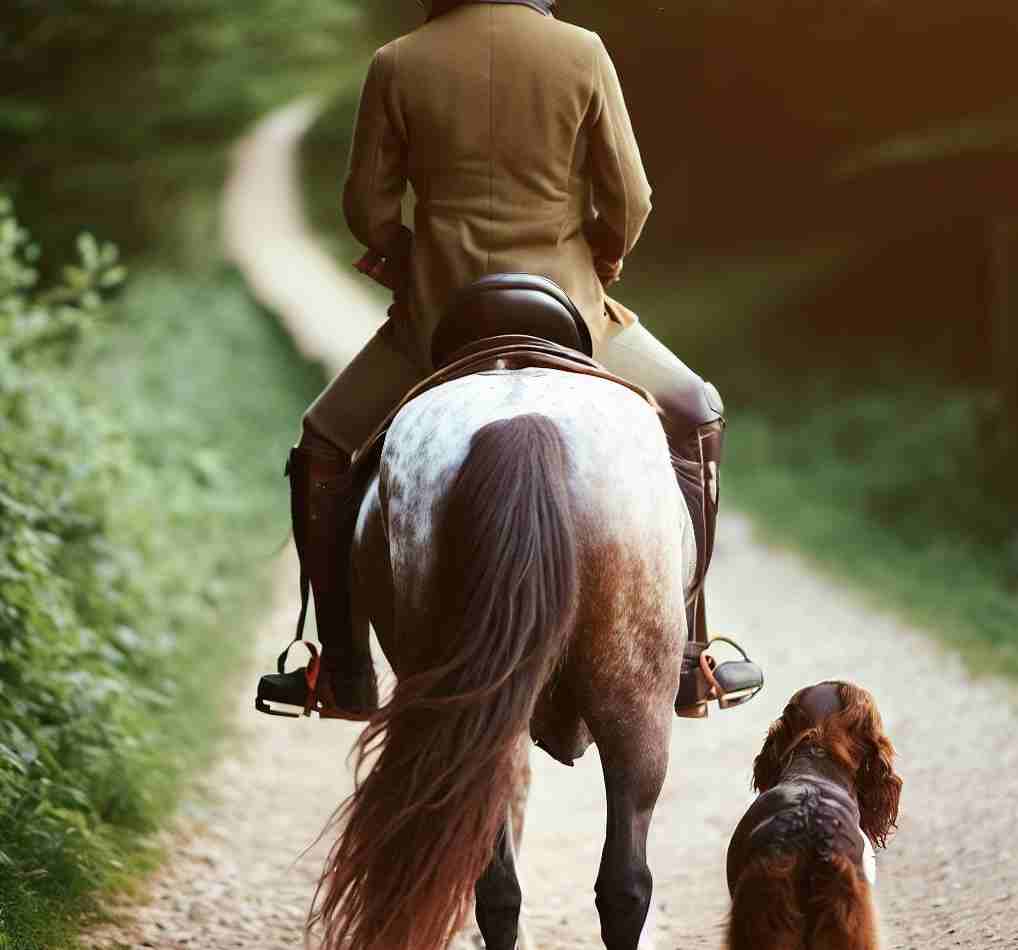
Step 4. Take Practice Strolls
Your animals ought to be prepared to start practice walks by this time. The best setting for this is a riding arena with few outside distractions. Additionally, your horse will feel more comfortable because the riding arena is familiar to him.
Start by slowly walking your horse while having your dog walk alongside you to the side. It is advised that you have a companion during this stage of training to assist you in keeping your dog under control while you concentrate on your horse.
Keep in mind to reward and praise both of your animals for their composure. You should gradually pick up the pace once they are accustomed to one another’s movements, making sure that both animals are completely calm the entire time. It’s a good idea to practice using your commands to keep your dog in a safe position if they start to move too close or too far.
Repeat the process once you’re sure they’re both at ease, but this time mount them. Again, having someone on the ground who can provide extra support and intervene to assist with your dog if necessary is a good idea.
Step 5. Take a Walk Together for the First Time
By this time, you ought to be reasonably confident that both of your animals are at ease with one another both inside and outside the riding arena and that they are both responsive to your simple commands. You’re now prepared to go on your first ride as a group.
Keep in mind to move slowly and, if you can, have help available. However, make an effort to rely on your assistance as little as possible. Focusing on both your horse and dog at once is one of the difficulties of riding with a dog, but this is something that you should eventually develop.
Try to maintain as much composure as you can to avoid letting your emotions convey to your horse. You may gradually start accelerating your pace after a few slower walks. If you see that your horse or dog isn’t responding to your training, keep working with them in the riding ring until you get the desired results.
Additional tips
The Best Horse for Your Dog: How to Choose
Horses are not all made equal. Different horses have different levels of tolerance with dogs. It’s crucial to pick a calm, kind horse if you’re considering taking your dog horseback riding. Additionally, stay away from horses with a reputation for being aggressive or unpredictable.
Selecting the Appropriate Trail for Your Dog
Your dog’s performance on the trail you choose for your horseback riding journey will also be impacted. Starting out slowly and gradually increasing the length and difficulty of the trail as your dog becomes more comfortable are both important when taking your dog on a new horseback riding trail.
Additionally, stay away from overly congested or busy trails. Your dog may feel anxious or stressed as a result of this overwhelming situation.
Bringing the Right Stuff
There are a few things you should pack if you plan to ride with alongside with your dog on horseback. These include:
- Water for your dog, a leash or harness;
- Dog and horse treats;
- First-aid supplies for you and your animals;
- Poop bags.
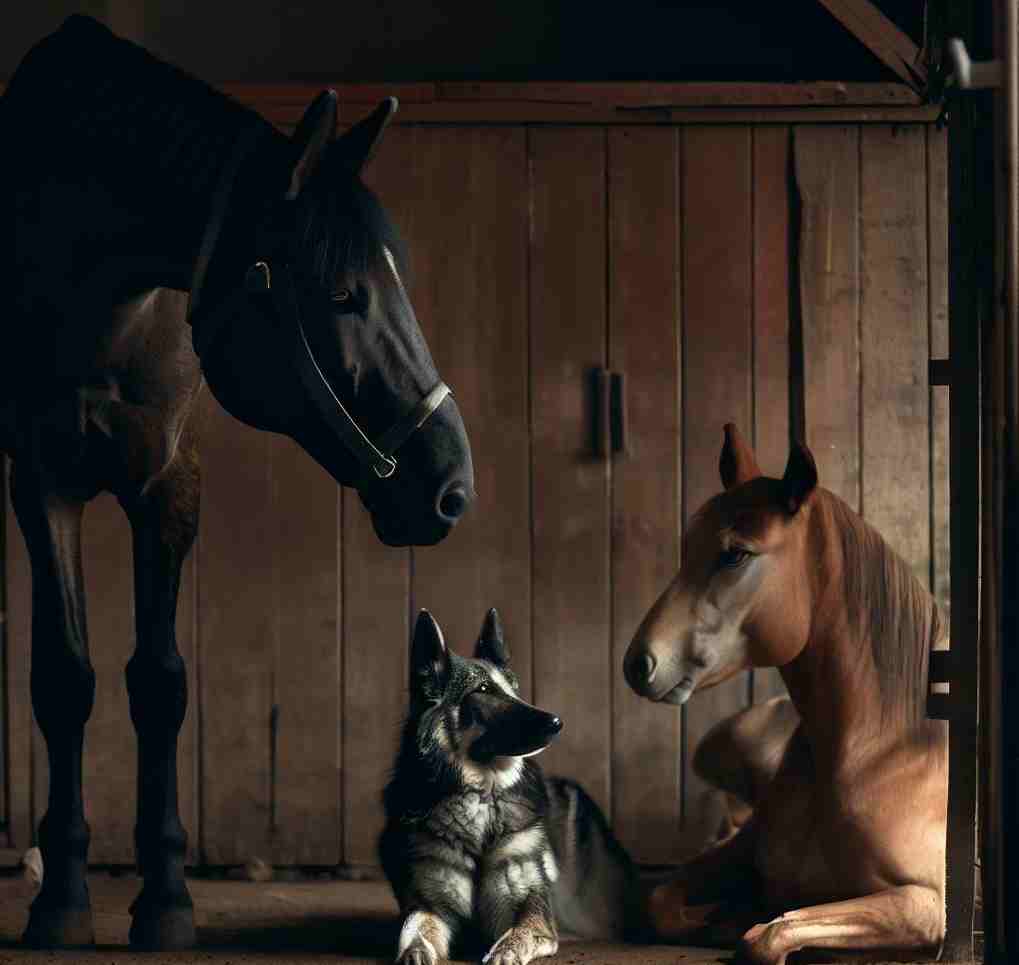
How to Deal With a Scared Dog
Being ready for the possibility that your dog might become frightened while you are horseback riding is crucial. The best course of action is to stop riding as soon as your dog exhibits signs of fear. Try to reassure your dog that nothing is wrong and try to calm them down.
You might have to carry your dog back to the trailhead if they are still frightened. Try taking your dog for a walk or playing fetch with them once you get back to the trailhead to help them relax.
